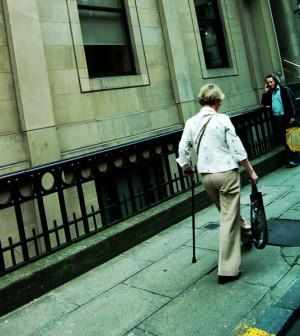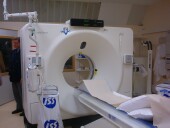- Double Mastectomy May Offer No Survival Benefit to Women With Breast Cancer
- Toxic Lead Found in Cinnamon Product, FDA Says
- Certain Abbott Blood Sugar Monitors May Give Incorrect Readings
- Athletes Can Expect High Ozone, Pollen Counts for Paris Olympics
- Fake Oxycontin Pills Widespread and Potentially Deadly: Report
- Shingles Vaccine Could Lower Dementia Risk
- Your Odds for Accidental Gun Death Rise Greatly in Certain States
- Kids From Poorer Families Less Likely to Survive Cancer
- Tough Workouts Won’t Trigger Cardiac Arrest in Folks With Long QT Syndrome
- At-Home Colon Cancer Test Can Save Lives
MRIs Plus Mammograms Best for High-Risk Women, Study Finds


For the best chance at spotting breast cancer early, women at high risk need frequent MRI screenings along with mammograms, a large Canadian study contends.
Mammograms alone failed to detect the early cancers in a study of more than 2,000 high-risk women, according to the findings.
“What my study is showing is that high-risk women should be screened earlier, beginning at the age of 30,” said study researcher Anna Chiarelli, a senior scientist at Cancer Care Ontario. “They should be screened often — every year — and they should be screened with both a breast MRI and a mammogram every year.”
Chiarelli and her colleagues followed 2,207 women, aged 30 to 69, all at high risk of breast cancer, to determine the effect of the two screenings. The women were enrolled in the Ontario Breast Screening Program, which expanded in July 2011 to screen high-risk women in a special program that uses both tests — MRI and digital mammography.
The women were viewed as high risk mainly if they had a known genetic mutation in the BRCA 1 or 2 gene, or other breast cancer-related genes; if they had not been tested for the mutations but had a first-degree relative with them; if they had a family history of breast cancer and personally had a 25 percent or higher lifetime risk; or if they had radiation therapy before age 30.
The first-year results of the high-risk program turned up 35 breast cancers. None of them was detected by mammogram alone; 23 were detected by MRI alone, and another dozen were picked up from both screenings.
“If we only had offered these women mammograms, we would not have found 23 of these breast cancers,” Chiarelli said.
In some cases, the mammogram was positive, in others, it was negative, she added. But in all the cases of breast cancer diagnoses, the MRI was positive.
The study is published in the June 16 online edition of the Journal of Clinical Oncology.
Some U.S. experts, including those at the American Cancer Society, also recommend both tests for high-risk women.
“The combination [using two tests] was important,” said Dr. Otis Brawley, chief medical officer of the American Cancer Society, who reviewed the findings. The society advises both tests be done annually in high-risk women.
He noted that the Canadian researchers looked at a rigorous program of screening with experienced doctors who read MRIs and mammograms correctly.
In the United States, some insurance plans will pay for both tests if a woman is at high risk, Brawley said. MRIs, which are much more expensive than mammograms, can cost $2,000 or more for both breasts.
Women do need to know that MRIs, which use magnets and radio waves, not radiation, may find suspicious lesions that turn out to be noncancerous, just as mammograms sometimes do, Brawley said.
The findings of the Canadian study apply only to high-risk women, not the majority of women. About 5 percent to 10 percent of breast cancers are linked to genetic defects, the society estimates.
More information
For more on breast cancer testing recommendations, visit the American Cancer Society.
Source: HealthDay
Copyright © 2024 HealthDay. All rights reserved.










